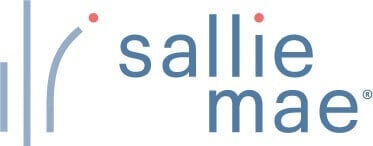Many students and families make difficult decisions when choosing whether to apply Early Decision or Early Action. Particularly, what kind of financial commitment are you making by applying during one of these windows? What if the college doesn’t offer you enough financial aid to make it an affordable option? How does the relationship between early decision and financial aid work?
Understand the Different Admissions Cycles First

Source: Flickr user nowhere77.
Before delving further, it’s important to first understand the differences between Early Decision, Early Action, and other admission cycles.
- Early Decision (ED) – This is an early college admission deadline that carries with it early notification and a binding obligation to attend the school if you are accepted. Applications are usually due on November 1st or 15th. Students tend to hear back from the school by mid-December. Some colleges also offer Early Decision II with a January 1st deadline.
- Early Action – This is an early college admission deadline that carries early notification, but there is no obligation on the part of the student to commit to the school prior. Applications are usually due on November 1st or 15th. Students tend to hear back from the school by mid-December, but students do not need to make a decision until May 1st.
- Regular Decision – Most students will apply under Regular Decision. These applications are due on January 1st, with some exceptions. Students are generally notified in early spring and must make a decision by May 1.
- Rolling Admission — Colleges accept applications year round or until spots fill up. There are priority admission deadlines that could increase chances of acceptance and affect financial aid offers.
Should You Apply Under Early Decision When Financial Aid Matters?
This is a debated topic. In most cases, acceptance letters under Early Decision are binding – except for one condition: you can back out if you didn’t receive enough financial aid to attend.
But even with that option, should you still apply to Early Decision? You might not want to. Getting a single acceptance and award letter means you can’t compare financial aid packages. You could miss out on thousands of dollars in free money by only applying for one school.
If you absolutely need institutional financial aid in order to attend a school, it might be a better option to apply under Early Action or Regular Decision.
There are ways to tell how much money you stand to gain from a school’s financial aid package. College Match, for example, can give you some insight into the sticker price vs what you’ll be expected to pay. However, keep in mind that these numbers are not binding. You may be offered much more or much less than these estimates.
What if You Were Accepted Under Early Decision and You Can’t Afford It?
In some cases, financial aid offer letters will come with the Early Decision acceptance letter. However, other schools may wait to send out these offers until they’re sending out Regular Decision acceptance and offer letters. Knowing when to expect your financial aid offer letter can help you plan your next steps. If you have to wait for a financial aid offer letter for your Early Decision college, you should absolutely be applying to other schools under Regular Decision in the meantime.
If you applied under Early Decision and found you weren’t offered enough in your financial aid package, you may still have options and be able to attend.
You should try:
- Asking the financial aid office for more money. Sometimes simply asking will net you a larger financial aid package! It never hurts to ask.
- Taking out student loans. Private and federal student loans can help bridge the gap between your financial aid package and cost of attendance.
- Applying for scholarships. Scholarships are available through non-profit organizations, companies, and more. You can find hundreds through scholarship databases.
If, even after you’ve taken these routes, you don’t have enough money to cover tuition, make sure to let your college know as soon as possible. They will advise as to the next route. Don’t ignore it and hope it goes away – the sooner you let them know, the sooner you can come up with a game plan for the coming weeks. You should also be trying to apply to colleges under Regular Decision and Rolling Admissions to secure a spot at another school.
Deposits are generally due right when you receive your acceptance letter, so you will want to be sure to send that over quickly to secure your spot. Keep in mind, though, that deposits are non-refundable. If you find you can’t come up with the remaining balance at a later date, you’ll likely be out the money you supplied as the down payment.
Should You Apply Under Early Action When Financial Aid Matters?
Generally, there is no harm in applying to a college or university under Early Action when financial aid matters. Early Action is non-binding, so you are not obligated to attend should you be accepted and you won’t have to make your final decision until May 1st. In most cases, you’re welcome to apply to other colleges under Early Action and Regular Decision (with Restrictive Early Action being the exception), and you have time to compare financial aid offer letters from other colleges.
Some schools will even offer accepted Early Action applicants full financial aid that covers demonstrated financial need.
The main downside of applying under Early Action when you need financial aid is the wait. You likely will have to wait several weeks or even months before you receive a financial aid offer letter from the college. Many schools wait to send them out until all Regular Decision applicants have been accepted. This could delay your decision making if you’re set on attending this particular college should they cover your financial need. There are, of course, exceptions to this. There are quite a few colleges and universities that will send Early Action accepted students their financial aid offers with their acceptance letters.
Tips for Getting More Financial Aid Under Early Decision or Early Action
There are ways to increase your chances of getting the money you need to attend your dream school. Here are a few tips to remember:
- Complete the Free Application for Federal Student Aid (FAFSA) as soon as possible. Delaying too long could cause you to miss out on institutional grant aid.
- Know your colleges’ FAFSA deadlines. You might have to get your FAFSA in a bit earlier if you want to receive a financial aid letter with your early acceptance letter.
- Compare your options. Once you receive your financial aid offer letters, compare them. It will become clear which is the better deal.
- Ask for more. If you go to a college and explain you want to attend, but the financial aid wasn’t enough and another school offered you more, you might be able to negotiate a higher financial aid package.
If you need financial aid to attend a school, you shouldn’t let that stop you from applying to a college under Early Decision or Early Action. However, you should have a backup plan and apply to other colleges, especially if you’re applying to a school under Early Decision. You don’t want to run into a situation where you don’t have a college to attend in the fall because the school didn’t offer you enough money. Applying to other colleges also gives you the opportunity to compare financial aid offer letters.
Did you know it’s possible to estimate how much money a school will grant you before you even apply? Through our College Match, you can see your estimated net price (and how that compares to the sticker price), expected debt at graduation, percentage of students receiving institutional grant aid, and more. It’s completely free to use, too!
| Lender | Rates (APR) | Eligibility | |
|---|---|---|---|
 |
5.34%-15.96%* Variable
3.99%-15.61%* Fixed
|
Undergraduate and Graduate
|
VISIT CITIZENS |
 |
4.92% - 15.08% Variable
3.99% - 15.49% Fixed
|
Undergraduate and Graduate
|
VISIT SALLIE MAE |
 |
4.50% - 17.99% Variable
3.49% - 17.99% Fixed
|
Undergraduate and Graduate
|
VISIT CREDIBLE |
 |
6.00% - 13.75% Variable
3.99% - 13.75% Fixed
|
Undergraduate and Graduate
|
VISIT LENDKEY |
 |
5.50% - 14.56% Variable
3.69% - 14.41% Fixed
|
Undergraduate and Graduate
|
VISIT ASCENT |
 |
3.70% - 8.75% Fixed
|
Undergraduate and Graduate
|
VISIT ISL |
 |
5.62% - 16.85% Variable
3.69% - 16.49% Fixed
|
Undergraduate and Graduate
|
VISIT EARNEST |
 |
5.00% - 14.22% Variable
3.69% - 14.22% Fixed
|
Undergraduate and Graduate
|
VISIT ELFI |





